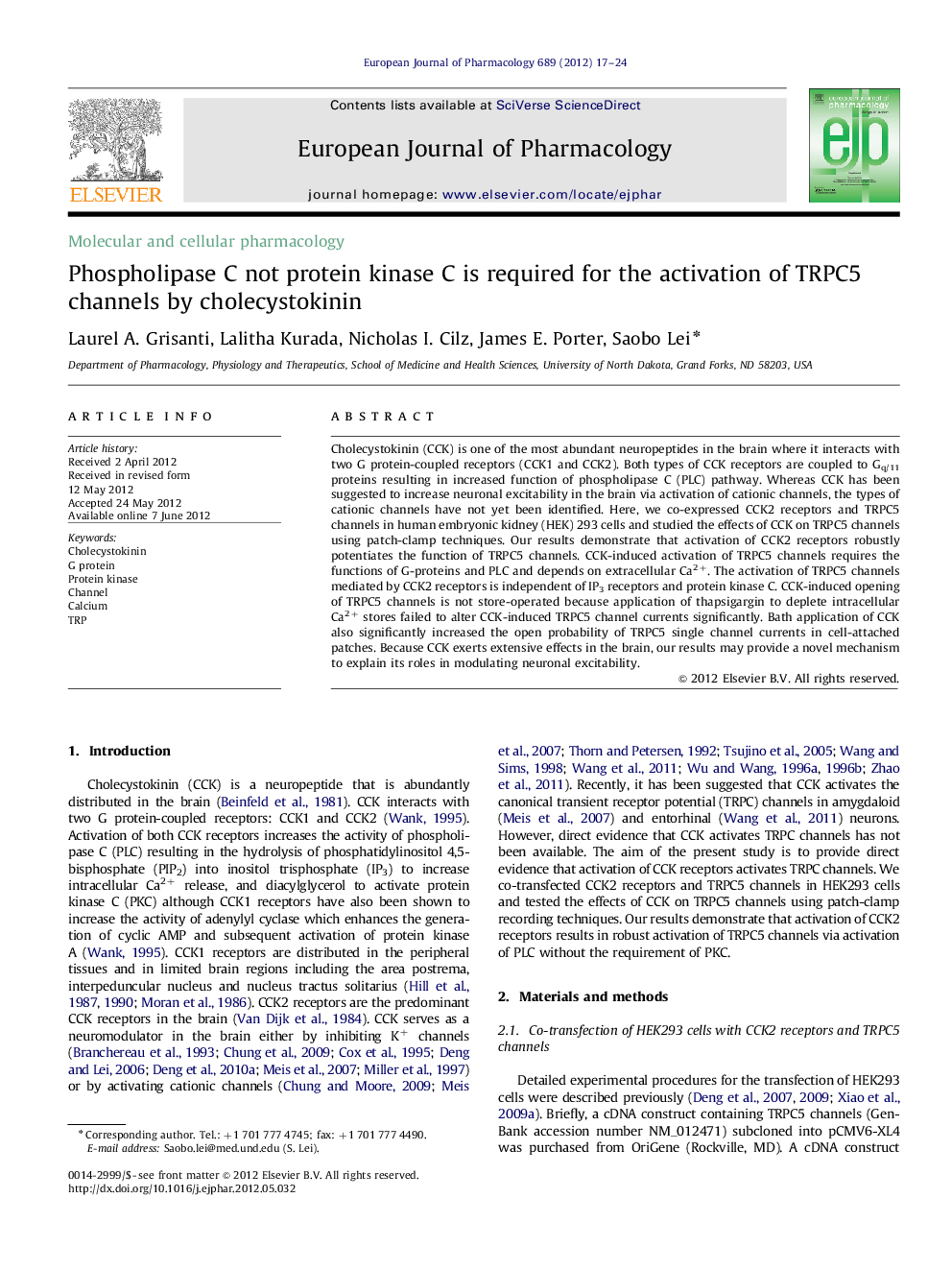| Article ID | Journal | Published Year | Pages | File Type |
|---|---|---|---|---|
| 5829395 | European Journal of Pharmacology | 2012 | 8 Pages |
Abstract
Cholecystokinin (CCK) is one of the most abundant neuropeptides in the brain where it interacts with two G protein-coupled receptors (CCK1 and CCK2). Both types of CCK receptors are coupled to Gq/11 proteins resulting in increased function of phospholipase C (PLC) pathway. Whereas CCK has been suggested to increase neuronal excitability in the brain via activation of cationic channels, the types of cationic channels have not yet been identified. Here, we co-expressed CCK2 receptors and TRPC5 channels in human embryonic kidney (HEK) 293 cells and studied the effects of CCK on TRPC5 channels using patch-clamp techniques. Our results demonstrate that activation of CCK2 receptors robustly potentiates the function of TRPC5 channels. CCK-induced activation of TRPC5 channels requires the functions of G-proteins and PLC and depends on extracellular Ca2+. The activation of TRPC5 channels mediated by CCK2 receptors is independent of IP3 receptors and protein kinase C. CCK-induced opening of TRPC5 channels is not store-operated because application of thapsigargin to deplete intracellular Ca2+ stores failed to alter CCK-induced TRPC5 channel currents significantly. Bath application of CCK also significantly increased the open probability of TRPC5 single channel currents in cell-attached patches. Because CCK exerts extensive effects in the brain, our results may provide a novel mechanism to explain its roles in modulating neuronal excitability.
Related Topics
Life Sciences
Neuroscience
Cellular and Molecular Neuroscience
Authors
Laurel A. Grisanti, Lalitha Kurada, Nicholas I. Cilz, James E. Porter, Saobo Lei,
